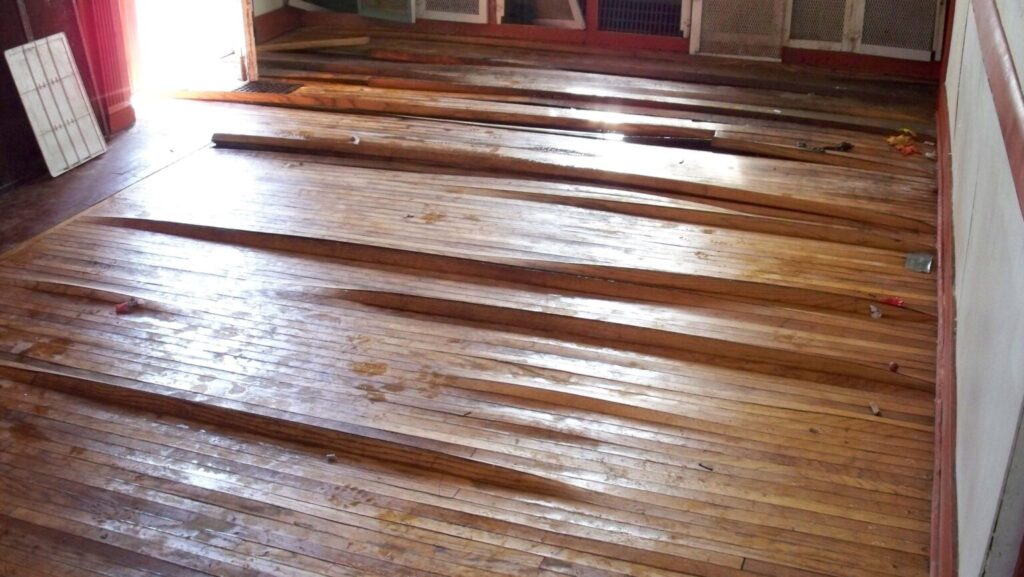Installing hardwood floors can transform your home, adding warmth and elegance. However, like any home improvement project, it can come with its challenges. Understanding common issues and knowing how to troubleshoot them can save you time, money, and frustration. Here’s a guide to help you navigate some of the most frequent problems you might encounter when laying hardwood floors.
Dealing with Gaps
Gaps between floorboards are a common issue, often caused by seasonal changes, improper installation, or moisture fluctuations. During dry winter months, the wood can shrink, leading to visible gaps.
Solutions:
- Seasonal Changes: Accept that minor gaps might be temporary and will likely close up during more humid months.
- Humidity Control: Use a humidifier in dry seasons to maintain consistent humidity levels in your home, which helps keep the wood stable.
- Proper Installation: Ensure that boards are properly acclimated to the room’s environment before installation and that correct spacing is maintained during the process.
Buckling
Buckling occurs when hardwood floors lift or warp, usually due to excessive moisture or improper installation techniques.

Solutions:
- Moisture Prevention: Make sure a proper vapor barrier is installed and check for moisture issues in the subfloor before installation.
- Proper Acclimation: Allow the hardwood to acclimate to the room’s humidity and temperature for at least 48-72 hours before installation.
- Secure Fastening: Use the correct amount of adhesive and nails/staples to secure the boards firmly to the subfloor.
Cupping
Cupping happens when the edges of a board are higher than the center, often due to moisture imbalance, with the underside of the board being more moist than the top.
Solutions:
- Moisture Testing: Test both the subfloor and hardwood for moisture levels before installation to ensure compatibility.
- Vapor Barrier: Install a vapor barrier to prevent moisture from seeping into the hardwood.
- Humidity Control: Use dehumidifiers to maintain consistent indoor humidity levels.
Crowning
Crowning is the opposite of cupping, where the center of the board is higher than its edges. This can occur if a cupped floor is sanded before it has dried out.
Solutions:
- Proper Drying: Ensure the floor is fully dry and acclimated before sanding and finishing.
- Moisture Control: Maintain consistent humidity levels to avoid moisture imbalances that can lead to crowning.
Squeaking Floors
Squeaky floors can result from movement between the subfloor and hardwood or between the floorboards themselves.
Solutions:
- Secure Installation: Make sure the hardwood is securely fastened to the subfloor with nails or glue.
- Lubrication: Apply a powdered lubricant, like talcum powder, between the boards to reduce friction.
- Additional Fasteners: Drive additional nails or screws into the subfloor to secure any loose boards.
Scratches and Dents
Hardwood floors can get scratched or dented due to heavy furniture, pet claws, or high foot traffic.
Solutions:
- Protective Pads: Use felt pads under furniture legs to prevent scratches.
- Rugs and Runners: Place area rugs and runners in high-traffic areas to protect the floor.
- Regular Maintenance: Regularly refinish the floors to maintain their appearance and protect against wear and tear.
Staining and Discoloration
Spills and pet accidents can cause stains and discoloration if not cleaned promptly.
Solutions:
- Immediate Cleanup: Clean spills and accidents immediately to prevent stains.
- Protective Finish: Apply a protective finish to the hardwood to guard against stains and spills.
- Professional Cleaning: Use professional hardwood floor cleaners for deep cleaning and stain removal.
Popping Nails
Nails can occasionally pop out of the hardwood, causing uneven flooring and potential hazards.
Solutions:
- Resecure Nails: Hammer down or replace any popped nails with new ones.
- Use Screws: Replace problematic nails with screws to ensure they stay in place more securely.
Moisture Control
Controlling moisture is critical to prevent many issues such as cupping, crowning, and buckling.
Solutions:
- Moisture Barriers: Use moisture barriers and proper underlayment during installation to prevent moisture issues.
- Humidity Levels: Maintain indoor humidity levels between 30-50% using humidifiers or dehumidifiers as needed.
- Ventilation: Ensure proper ventilation in rooms with hardwood flooring to avoid moisture buildup.
By understanding these common issues and how to address them, you can ensure that your hardwood floors remain beautiful and functional for years to come. Proper installation techniques, regular maintenance, and effective moisture control are essential for avoiding these problems and enjoying the timeless elegance of hardwood flooring.